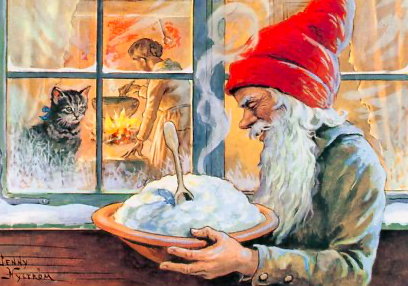What is the origin story of nisse and tomte?
A nisse (Denmark and Norway), also known as a tomte (Sweden), and a tonttu (Finland), is a mythical creature with a long history in Scandinavian folklore. These small, humanoid beings are associated typically with the rural countryside and are considered guardians of the farmsteads. The tradition of the tomte or nisse is deeply rooted in the cultures of Sweden, Denmark, Finland and Norway. While they are not directly associated with Christmas celebrations worldwide, they do have some connections to the holiday season in the Scandinavian countries. Here is the origin story and characteristics of these gnome-like creatures.

- Ancient beliefs: The concept of nisse or tomte has its origins in ancient Norse and Scandinavian folklore. These beings were believed to be protective spirits of the farm and household, ensuring the well-being of the family and livestock.
- Appearance: Nisse and tomte are often depicted as small, bearded men wearing traditional Scandinavian clothing, including a pointed red hat. They are usually portrayed as friendly and kind-hearted but can also be mischievous if they feel neglected or disrespected.
Interesting anecdotes about nisse and tomte

- Christmas connections: While the nisse/tomte tradition is not directly tied to Christmas, it has become intertwined with holiday customs in Scandinavia. In Sweden and Denmark, it is common to include a nisse or tomato figurine or ornament as part of Christmas decorations. These figurines are often placed on Christmas trees or around the home.
- Rice pudding offering: In Denmark, it is a tradition to leave a bowl of rice pudding or porridge out for the nisse or tomte on Christmas Eve as a gesture of goodwill. It is believed that the nisse or tomte would turn mischievous or even angry if this offering is neglected.
- Gift-giver role: In some regions of Scandinavia, the nisse or tomte is associated with gift-giving during the holiday season. Children may believe that the nisse/tomte brings them gifts on Christmas Eve. This role is similar to that of Santa Claus in other cultures.
- Guardian of the farm: Traditionally, the nisse and tomte were considered the guardians of farms and their inhabitants. Farmers would leave offerings of food, such as porridge, in the barn to ensure the nisse/tomte protection and goodwill.
- Farm superstitions: Farmers believed that it was essential to treat the nisse and tomte with respect and kindness. They would avoid using harsh language, refrain from playing pranks, and make sure the nisse/tomte had a comfortable place to stay within the farm, often a small nook or barn loft.
- Modern interpretations: Today, the nisse/tomte tradition remains alive in Scandinavian countries, and these creatures are celebrated as part of the cultural heritage. Modern interpretations include figurines, ornaments and decorations that are popular during the holiday season.

In a nutshell
While the nisse/tomte tradition is deeply rooted in Scandinavian folklore and customs, it has influenced some Christmas practices in the region. These mythical beings, with their distinctive red hats and benevolent yet mischievous nature, add a touch of whimsy and cultural richness to the holiday season in Scandinavia.
Coda
Today, DALL-E 3 imagines the Yule Lads disguised as nisse and tomte, guardian a farmstead nestled in an Icelandic landscape.



